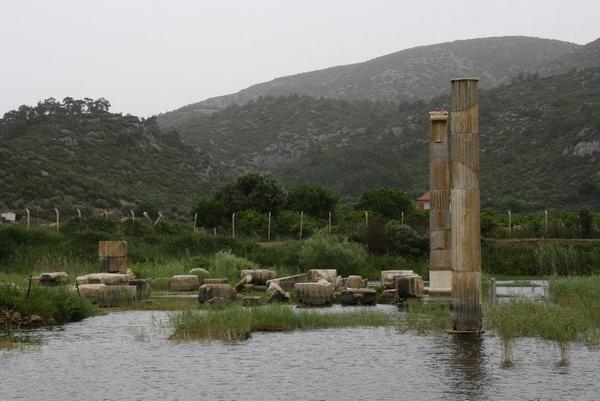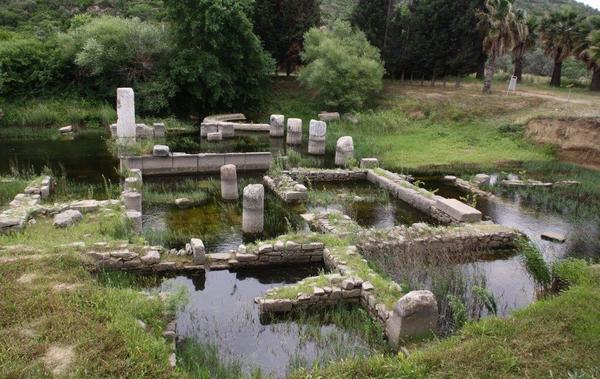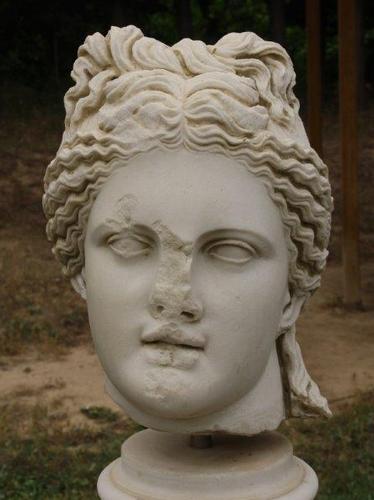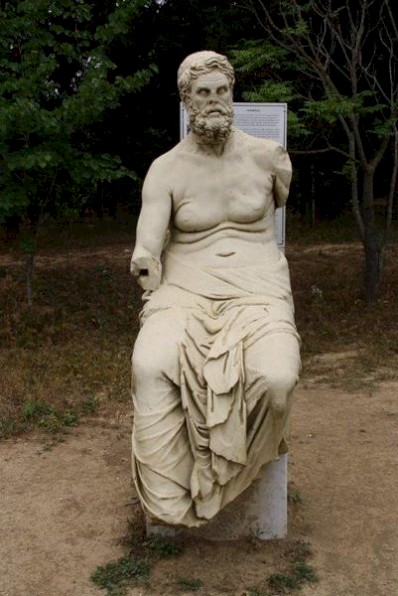Clarus
Q1933754
The temple of Apollo at Clarus was famous in Hellenistic times, but more particularly in the Roman period, for its oracle. It lies on a flat tract of land in a narrow valley within the boundaries of Colophon, two kilometres of the port of Notion. This sacred place, with a sacred spring and wood, has been the centre of an important cult as far back as the seventh and sixth centuries BCE, already mentioned in the Homeric hymns.note Archaeological investigations have brought to light protogeometric pottery from the tenth century BCE.

The propylaea, erected in the seconnd century BCE, served as the entrance for those approaching by sea. It was almost square in shape and built in the Doric building order. The krepidoma was three-stepped. The inner surfaces of the recovered columns are covered with inscriptions carved in the second century CE. These comprise lists of deputations from Asia Minor, Thrace and southeastern Europe who had come to consult the oracle of Apollo.

At a later date, a colonnade set aside for business premises was built along the west side of the propylon, whereas on the east side there was a semi-circular exedra, measuring eight meters across, which has completely been preserved. The sacred road came to an end exactly in front of the east face of the temple, which was 26 x 46 meters in size and of the Doric style.
The temple collapsed as a result of an earthquake. Seven capitals and 150 drums have been recovered. The temple must have been constructed in the late fourth century BCE or at the beginning of the Hellenistic era. According to the inscription on the architrave, the peripteros was completed in the time of the emperor Hadrian (r.117-138 CE).
Large parts of huge statues representing Apollo, Artemis, and Leto were discovered within the cella during the excavations and these remains are still in situ.

The oracle was consulted beneath the cella. Greek and Roman authorities write that the divine revelations were not made through the medium of a woman, like the Pythia at Delphi, but through a male prophet. The seer would enter the cave or an underground chamber and, having drunk the mysteriously endowed holy water, would utter the prophesy in the form of scanned poetry. The oracle was always consulted at night.
A stone with an inscription was set up to the south of the altar, in the name of Cicero's brother, Quintus Tullius Cicero, who was a governor of the province of Asia.
Some statues and reliefs of fine quality were brought to light during the excavations and these are now housed in the Archaeological Museum of Izmir. On the site are some replicas exposed of statues depicting Aristotle and other figures.